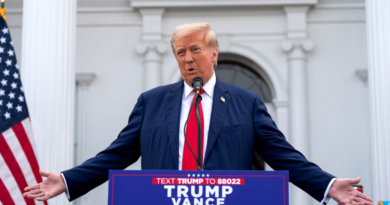Lower mortgage rates aren’t igniting the housing market. There are 2 key reasons why, top economist says
Anyone who wants to buy a home wants a low mortgage rate. Well, mortgage rates are falling, and yet people aren’t rushing the market.
The average 30-year fixed mortgage rate is at its lowest since February last year, and before that, it’d been dropping on the back of positive economic signs. Still, we’re sinking closer and closer to that pivotal magic number the industry loves to say will trigger a wave of movement—we’re at a 6.2% mortgage rate, and according to the real estate lifers, we need to be at 6% or lower.
Yet, Big 4 accounting and professional services firm KPMG’s chief economist, Diane Swonk, gave a few key reasons why people aren’t buying homes despite the shift in rates in a recent interview with CNBC. It comes down to two points really: People are waiting for mortgage rates to sink further, or they simply can’t afford to buy a home because of higher costs all around.
“We’ve not seen the reaction that we had seen earlier in the year, every time the mortgage rate dipped, people flooding into the market,” she said. “Part of that is people waiting for mortgage rates to fall more than they have on the hopes of rate cuts by the Federal Reserve. But another part of it is the affordability equation got worse.”
The Fed is expected to deliver a 25 basis cut this week, but that’s to the federal funds rate, which refers to the interest rate banks charge each other for overnight loans, but isn’t directly tied to mortgage rates. A lower fed funds rate influences other short-term interest rates and the general interest rate environment. However, mortgage rates are more closely tied to the yield on 10-year Treasury bonds.
So it isn’t directly clear whether or not mortgage rates will fall in the immediate aftermath of an interest rate cut, particularly because the market has already priced in a September slash. But the general population’s sentiment may be that the two are more connected than they are. Therefore, they’re holding out hope for mortgage rates to drop more.
On the other hand, affordability is shot all around. Swonk mentioned rising insurance costs, booming home prices, and high rents, all of which are making it harder to buy or own a home regardless of borrowing costs. “It’s not just interest rates that are holding people out of the market,” she said.
Swonk shares a view held by almost all housing policy analysts and urban economists, that there’s a shortfall of housing in our country that’s made it so home prices rarely fall. Zoning and land-use regulations are the crux of the problem, she said. “We’ve been underbuilding for decades in this country, and it’s been because of a constraint on zoning,” Swonk explained.
The number of affordable homes were in the hundreds of thousands in the 70s, but now they’re only in the thousands, and it’s because of the “not in my backyard, zoning laws we have,” she said, playing on the acronym NIMBY, used to refer to those who don’t want development in their neighborhoods. And while the presidential candidates have plans (or maybe approaches) for housing, it is a local issue more than anything else.
“We have an affordability problem that is a supply problem,” Swonk said. “It is a huge problem in terms of building wealth for a whole generation, if not two generations, of people. And that’s one of the reasons why millennials are not as happy as their predecessors, because they do want to buy a home.”
That isn’t to say lower mortgage rates aren’t appreciated—they are, but there’s more at play. Either way, we’ll see where mortgage rates go from here, and if it’ll be enough to bring back sidelined would-be homebuyers.



